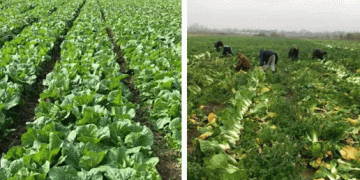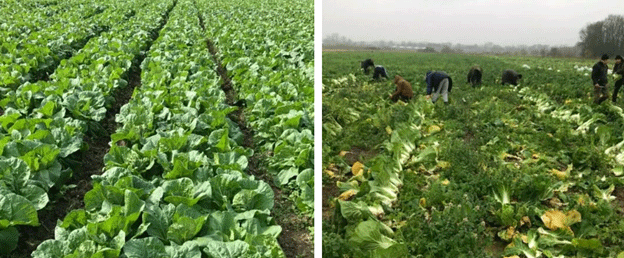In the village of Kumachevo, Zelenogradsky District, the agricultural enterprise is in full swing with the harvest of Chinese cabbage. The farm’s operations, which began with planting seedlings across six hectares in August, have already resulted in half of the acreage being harvested, equaling about three hectares. Each day, approximately two tons of this essential leafy vegetable are collected. Favorable weather conditions are aiding farmers in preserving the harvest’s quality, with some of the crop already being distributed to regional stores while the rest is being prepared for long-term storage.
Chinese cabbage, also known as Napa cabbage, is a versatile and nutrient-rich crop that requires a climate-friendly environment to maximize yields. Optimal growth conditions range between 15°C and 22°C, and the crop typically matures between 55 and 70 days depending on the variety. With proper water management, especially crucial during the head-formation stage, the yield can be substantial. Regular feeding with organic and mineral fertilizers, like nitrogen and potassium, enhances the quality of the produce. During the post-harvest phase, Chinese cabbage can be stored for up to six months if kept at 0°C to 1°C and at a humidity level of 90-95%, which retains freshness and prevents wilting.
The Zelenogradsky District’s current favorable weather is instrumental in the success of this harvest. Reduced precipitation ensures proper soil moisture balance without the risk of crop rot, which often threatens cabbage varieties during rainy periods. Farmers are taking advantage of these conditions to optimize the harvesting and storage process. The efficient transition from field to store shelves is crucial for minimizing losses and ensuring that the community benefits from fresh, healthy produce.
The Chinese cabbage harvest in Zelenogradsky District is a testament to strategic planning and optimal environmental conditions. By focusing on timely irrigation, nutrient-rich soil, and favorable weather, farmers have successfully maximized yields. As a result, the agricultural community is set to deliver both fresh and long-lasting cabbage supplies, contributing to local food security and economic stability.































